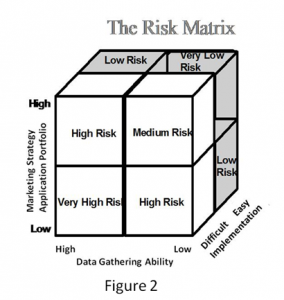Part 1 got us to the conclusion that the highly centralized model of the early years of CRM systems is causing a push to web-based technology which is nothing more than allowing the applications to execute where they make the best-business sense – close to the customer.
There are certain drawbacks to this among which is the need to move more and more data around the organization. This puts pressure on the enterprise to invest in networking technology and to keep pace with the demand for broader bandwidth to move the increasing quantities of random information around the organization. It also places strict requirements for data network security.
The business environment is highly dynamic and subject to ‘rapid change without notice’ and thus, any implementation of CRM systems must support the ability to rapidly change the data points of the customer. This means a push for ‘open architected systems’ which should not be confused with open systems. It also means a heavy requirement for marketing research and marketing strategy. Most ‘Sales Force Automation systems’ have very low levels of built-in customer data points. There is a requirement for a new genre of CRM systems which have a large number of customer data points with the ability to added more of these ‘on the fly’ and analytical engines that can parse bits and pieces of random data and result in major marketing research and marketing decision making capability.
As we build applications solutions in this new environment, we must conform strictly to the needs of the business and not to the technology of the platform. We therefore need to define the business processes by means of high level marketing abstractions and not low level data or program elements. Speed and the ability to have these solutions interoperate is dictating the move to web-based technology which is nothing more than putting the application closer to the user and to the customer with whon that user interfaces. Typically available solutions are the web-based ready-to-run off-the-shelf sales force automation solutions. These do not have the customer data gathering or analytical engine and marketing research and decision making capabilities needed today. This is another reason why CRM is failing in the enterprise today.
As today’s executive tries to manage risk while deploying CRM solutions there are three important criteria to examine – The data gathering ability of the system, the strength of its marketing research application portfolio and it ease of implementation in end user environments where there is customer contact. The objective is to find a solution with the lowest risk residing in the upper right rear sector (figure 2). Web-based systems would appear to lend themselves to this sector because of their ease of implementation. Most of the current crop of Sales Force Automation systems is medium to high risk because of the lack of analytical/marketing strategy applications and the lack of customer relationship data gathering capability.
The current CRM re-engineering phenomenon is not a passing event but rather an on-going continual process. As we move along in the 21st century, the need for multi-media applications is going to raise new challenges for the storage and retrieval of data and information. The push towards data warehousing in the nineties was the recognition of the need to handle corporate data in an organized fashion. In reality, the more challenging perspective of today will be that of data architecture. How do we design and build the entire data handling capability of the marketing organization in a structured fashion so that we do not run into trouble when we have to expand the data points of the customer base.
It is nice to finally see Customer Relationship Management taking its place as a marketing management tool within the organization. We are finally well past the phase when business executives believed that they could rely solely on sales force automation and did not have to understand marketing strategy. The executive of this new decade is first a marketing guru and then a sales junkie. The 21st century is demanding an even closer understanding of the customer.




